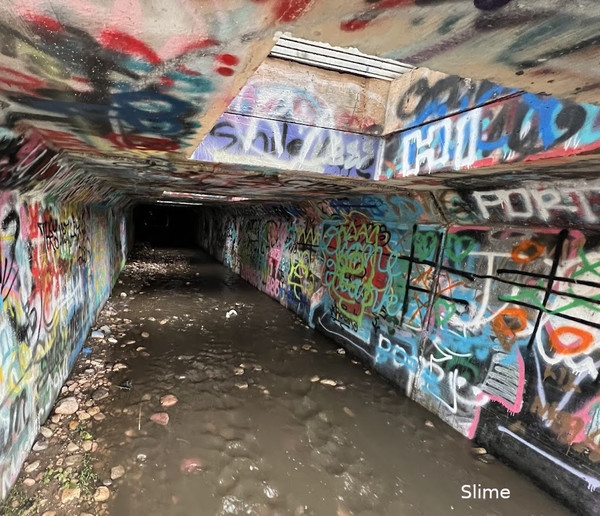Dublin Core
Title
Description
Did you know there is a mile-long passage running underneath the southern Utah town of Cedar City? Built in the 1990s, this infrastructure is a failed attempt to answer a twentieth-century agricultural problem -- that is, how does a ranching town accommodate urban growth? The purpose of this tunnel was to safely move herds of sheep between the pastures of Cedar Mountain and the desert valley outside of town without disrupting traffic or business development. The Cedar City Sheep Tunnel is now abandoned, but is a reminder of the struggle to balance the current needs of a growing population with its rural past.
Raising livestock was a large part of Cedar City’s nineteenth-century economy and sheep were well-suited to the region. Foraging on nearby Cedar Mountain, sheep provided town residents with milk, meat, and wool for clothing. The animals thrived, but were time-consuming to care for and families eventually combined their individual herds to create larger community herds. Beginning in 1870, shepherds guided these community herds down from Cedar Mountain, through the town of Cedar City, and west into Cedar Valley.
Sheep ranching remained critical to Cedar City’s agrarian economy well into the twentieth century. Sheepherders continued to lead their animals down from the mountain and along present-day Main Street. Despite Cedar City’s commitment to its agrarian economy, growing development put pressure on the traditional ways of moving these animals. New buildings, highways, and a growing population threatened the open landscape once afforded to livestock. In the 1990s, a conflict between local stockmen and land developers jeopardized the construction of a shopping district. The sheep trail ran straight through the building site and there were additional concerns over increased traffic in the area. The solution? Moving sheep through an underground tunnel.
The town built it, but ultimately, the tunnel proved useless. The space was dark and the noise from passing cars scared the sheep. After just one season, sheepherders returned to the pre-existing livestock trail along Main Street. Today, hundreds of wooly sheep are still herded down from Cedar Mountain each fall in a “parade of sheep” that is now part of the Cedar City Livestock and Heritage Festival. This three-day festival includes the sheep parade, horse-pulled camp wagons, Dutch Oven contests, and other family-friendly activities designed to celebrate the region's rural traditions.
Creator
Source
_______________
See Brooklyn Rushton, “This Year’s Sheep Parade was a Celebration of Small Town Agriculture,” SUU News, November 1, 2022; “Historic Sheep Trails Keep Us Connected - To Our History and Our Food Supply,” Utah’s Own: Utah Department of Agriculture and Food; Mark Havnes, “Cedar City’s Main Street Becomes a River of Wool,” The Salt Lake Tribune, October 30, 2010; William R. Palmer, “The Early Sheep Industry in Southern Utah,” Utah Historical Quarterly vol. 42 (no. 2), Spring 1974; “When the Din of Sheep Shearing Rocked the Desert,” The History Blazer, January 1995.

